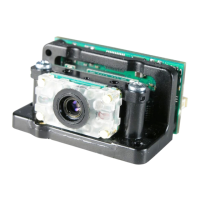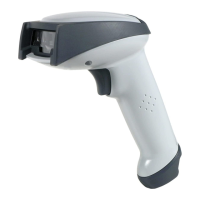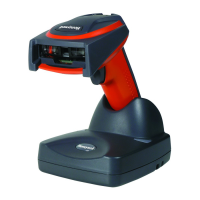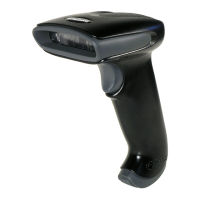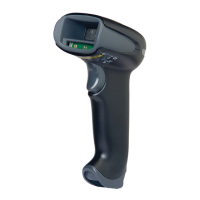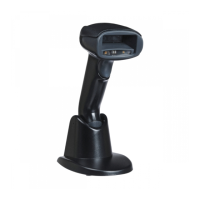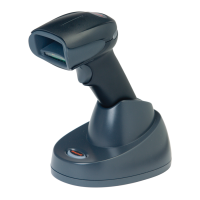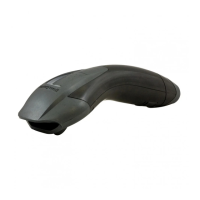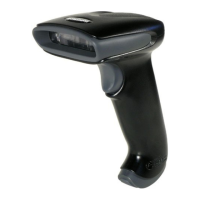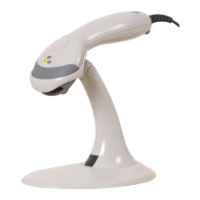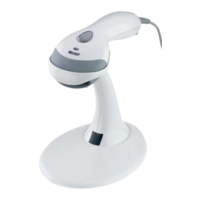9 - 7
OCR User-Defined Variables
You can create up to two of your own user variables for an OCR template. These
variables will represent any OCR readable characters. The user-defined
variables are stored under the letters “g” and “h.” Creating a user variable follows
the same steps as creating a template, but instead of scanning the
Enter OCR
Template
symbol, you scan the
Enter User-Defined Variable
symbol (page 9-
14). The letters g and h can then be used in an OCR template to define the
variable you specified.
Example: You need a variable to represent the letters “A,” “B,” or “C.” The
template for this variable would be:
414243
To create this template, you would enable the OCR-A font. Scan the
Enter
User-Defined Variable
g
symbol (page 9-14). Scan
414243
from the
Programming Chart (the hex characters for “A,” “B,” and “C”). Scan
Save
OCR Template
(page 9-14). This will let you read either A or B or C in any
position where you place the g. For example, you could create the following
template:
ddddddggg
This template would then let you read data that began with six digits, and had
an A, B, or C trailing. So you would be able to read:
654321ABC
or
654321BAC
or
654321CCC
Reading Multi-Row OCR
The 5X80 is capable of decoding multi-row OCR text.
Note: Reading rows longer than sixteen characters is not recommended.
Consider the following example. This example shows serial commands as they
would be entered using Quick*View.
Example: You need to read multiple rows of OCR-A data as shown below:
12345678
ABCDEFGH

